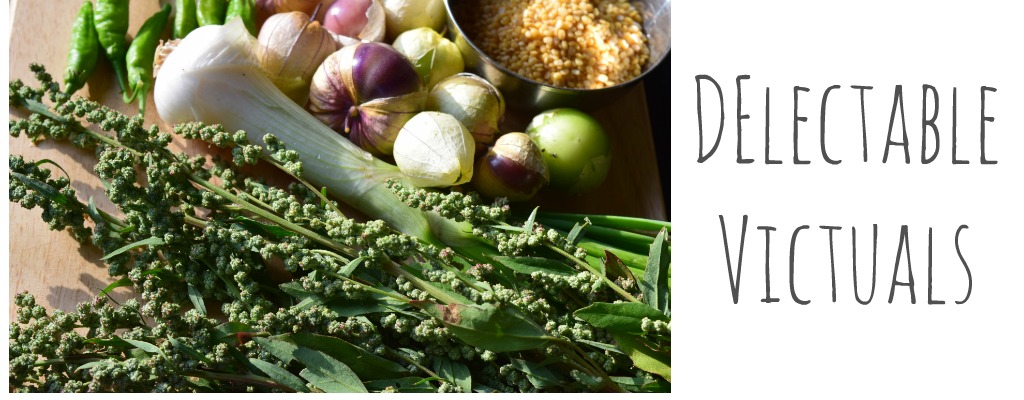Verum Arisi Adai
Verum Arisi Adai translates to Plain Rice Adai, a Palakkad specialty. Among the various griddle-cooked pancake-like flatbreads of south India, this Verum Arisi Adai is not that well-known.
It is fairly thick, even up to a quarter inch thick, and needs to cook over medium-low heat for enough time so insides are not raw. Usually it helps to make 3 or 4 "holes" on the surface and drops some oil in to help with crisping the surface.
My favorite additives to the plain rice adai batter are: chopped greens like kale, beet greens, spinach, grated carrots, finely diced onions, finely chopped coconut, whole black pepper, coriander and curry leaves. Of course, not all of these at the same time - that would just overload the adai.
The picture doesn't do justice to the taste, naturally. In fact, the resident eight year old who has an opinion about everything, told me that it looks like dried up fake puke and refused to try even a courtesy bite.
Soak 2 cups red par-boiled rice overnight (with 1 Tbsp fenugreek seeds), grind it to a coarse batter that is thick, with very little water; should be able to scoop a handful, roll it into a ball so it will still hold its shape on its own. This batter tastes better when allowed to ferment overnight with natural wild yeast fermentation, no additives.
However, since I don't get the traditional variety of rice here, and since I don't want to go to the trouble of soaking and grinding the long grain rice batter just for me, I have this alternate recipe using coarse rice meal like for Arisi Upma Kozhakattai.
- Soak required amount of Coarse ricemeal (also sold as Rice Idlee Rava in Indian stores), grind it with just enough water to make a thick paste; and allow it to ferment overnight
- When ready to make the adais, add a tad bit of rice flour if the batter is too brittle and breaks apart when made into adai; the flour seems to help keep it together;
- Add in grated carrots or kale or onion or any other favorite veggies, adjust salt to taste, and cook on a medium hot pan on both sides till cooked through
- Serve with favorite chutneys or pickles; I serve it with pickled beets
Labels: adai, flatbread, indian, palakkad, red rice, tiffin, vegetarian






 My mom gifted me this little non-stick aapam pan-of-sorts recently and I decided to try it out. The batter is my version of it, I am still experimenting with proportions, but this batch was quite good.
My mom gifted me this little non-stick aapam pan-of-sorts recently and I decided to try it out. The batter is my version of it, I am still experimenting with proportions, but this batch was quite good.







